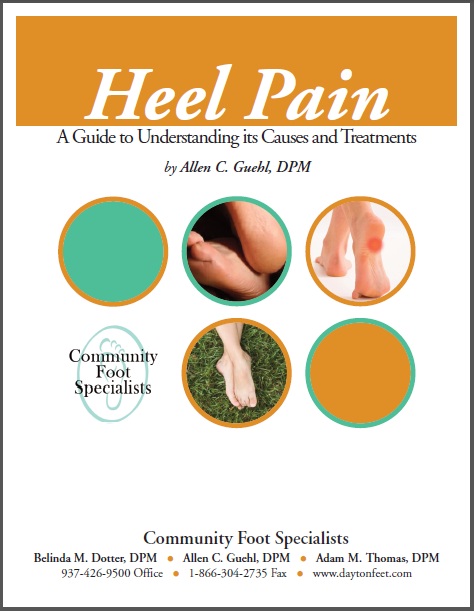The Diabetic Foot
Amputation of the foot or lower limb is the most frequently occurring complication for people with Diabetes. According the the American Diabetes Association, Diabetes affects over 5% of the population, and different segments of the population are more or less likely to be afflicted with diabetes and its complications. Diabetics must constantly monitor the health of their feet, as there are a number of complications and risk factors that could lead to problems.
A small wound or blister on the foot may not be a serious concern to the typical person, but to a diabetic a minor abrasion or ill-fitting shoe could cause major complications. The Diabetic foot is at an increased risk because of a decreased blood flow, which inhibits the healing ability of the body. Since the wound is slow to heal, the risk for infection greatly increases. Thus, as blood flow slows, risk of infection increases 2536a8*nd the spread of the infection is accelerated. The first step a diabetic should take is to inspect their feet daily. To accomplish this, a mirror could be used to see all aspects of the foot or someone else could inspect them for you.
Dos and Don'ts for Diabetic Foot Health:
1) Inspect feet Daily. Look for areas of pressure, wounds, punctures of the skin, calluses, nail problems, scratches and redness.
2) Monitor the warmth and dryness of your feet. Always keep your feet warm, and keep them dry in the snow and rain. When going to bed, wear a warm, loose fitting pair of socks. After a shower, dry your feet thoroughly by dabbing and make sure they are dry between your toes.
3) Feet should be washed with soap and water daily, and you should never soak your feet.
4) Use quality, diabetic approved lotions to keep feet moisturized. You should avoid using anti-septic solutions, drugstore medications and any sharp instruments on your feet.
5) Trim your nails straight across. Do not cut out the corners.
6) Buy shoes and socks very carefully. Shoes should be inspected and tried on to ensure proper fit and comfortability. A clean pair of dry socks should be wore every day. You should avoid socks with holes, wrinkles and big seams across the toes. These all can rub the skin and cause irritations.
7) Contact a podiatrist. All diabetics should have at the very least a yearly examination of your feet and circulation.
Foot Related Diabetic Complications:
1) Diabetic Neuropathy:
Neuropathy could be painful or painless. It can cause you to lose sensation in your feet and lower limbs, and this is the time that you must be most cautious as a diabetic. Loss of feeling means you may not feel an injury or excessive heat or cold. You could have a nail in your shoe and not know it, You could have frozen toes and not feel it, You could have a blister or an ulcer and never know it until there is a volatile infection. Daily foot inspections and your choice of shoe and sock gear are especially important when you have decreased sensation. You should contact your podiatrist if you feel that you may have diabetic neuropathy.
2) Foot Ulcers:
 Foot ulcers most commonly occur on the ball of the foot or the big toe since those are the areas of your foot that receive the most pressure. However as a podiatrist, I have seen ulcers on every aspect of the foot and ankle. An area of high pressure may begin with a small callus that builds up overtime, but they can continue to progress as the diabetic is not aware of the excess pressure and rubbing. An ulcer requires immediate medical attention, as they can become infected and lead to loss of a limb. X-rays will need to be taken to ensure that an infection has not traveled to the near-by bone. A podiatrist will also remove other dead skin in the area and may culture the wound if there is a possibility of infection. For the ulcer to heal, it is important to stay off of your feet. If this is not an option, your podiatrist maybe able to fashion a brace or shoegear that offloads the pressure. Once it is healed, you will still have to treat the area very carefully as it may return.
Foot ulcers most commonly occur on the ball of the foot or the big toe since those are the areas of your foot that receive the most pressure. However as a podiatrist, I have seen ulcers on every aspect of the foot and ankle. An area of high pressure may begin with a small callus that builds up overtime, but they can continue to progress as the diabetic is not aware of the excess pressure and rubbing. An ulcer requires immediate medical attention, as they can become infected and lead to loss of a limb. X-rays will need to be taken to ensure that an infection has not traveled to the near-by bone. A podiatrist will also remove other dead skin in the area and may culture the wound if there is a possibility of infection. For the ulcer to heal, it is important to stay off of your feet. If this is not an option, your podiatrist maybe able to fashion a brace or shoegear that offloads the pressure. Once it is healed, you will still have to treat the area very carefully as it may return.
3) Calluses and Skin Changes
Calluses occur more frequently and they thicken more quickly in people with diabetes. These calluses occur at high pressure areas of the foot, and if not trimmed the dead skin can break down and become an ulcer. You should not try to cut the corns and calluses yourself (or apply chemical agents to break them down) because if done incorrectly or too deeply, ulcers or infections could occur. The ADA recommends the daily use of a pumice stone while your feet are wet. Since your feet also become more dry and crack and peel, you should also apply some lotion after the pumice stone.
4) Toenail changes with Diabetic feet
Your toenails may also become thick, discolored and very hard. Since you are likely to have decreased circulation to your feet, your toenails will also suffer. Fungal infections become more difficult for your body to combat, and all ten toenails maybe thick and discolored. Your normal toenail clippers may no longer be effective in trimming your nails. In this case, you should contact your podiatrist to evaluate your feet and nails to determine if you qualify to have a regular visit to the podiatrist for your feet to be checked and your nails to be trimmed.
Additional Resources concerning Diabetic Foot Health:
www.healthline.com/health/type-2-diabetes



















